The making of a mallet
This was a quick project made entirely from found-wood. Nothing was purchased to build this mallet (except for the boiled linseed oil). Mallets are a great introductory project, since there are really only two parts: the mallet head, and the handle. When you build a mallet you want the heaviest, densest wood possible for the head, and something that can take a decent amount of shear-stress for the handle. Ash and hickory are a common combination.
Recently, my aunt had a silver maple tree taken down in her yard to make room for new utility poles, and there some odds and ends left over after the town cleaned up. When I came by to clean up and take some firewood, I found a few good blocky pieces and thought "Hmmm, can I make a mallet head with this?"
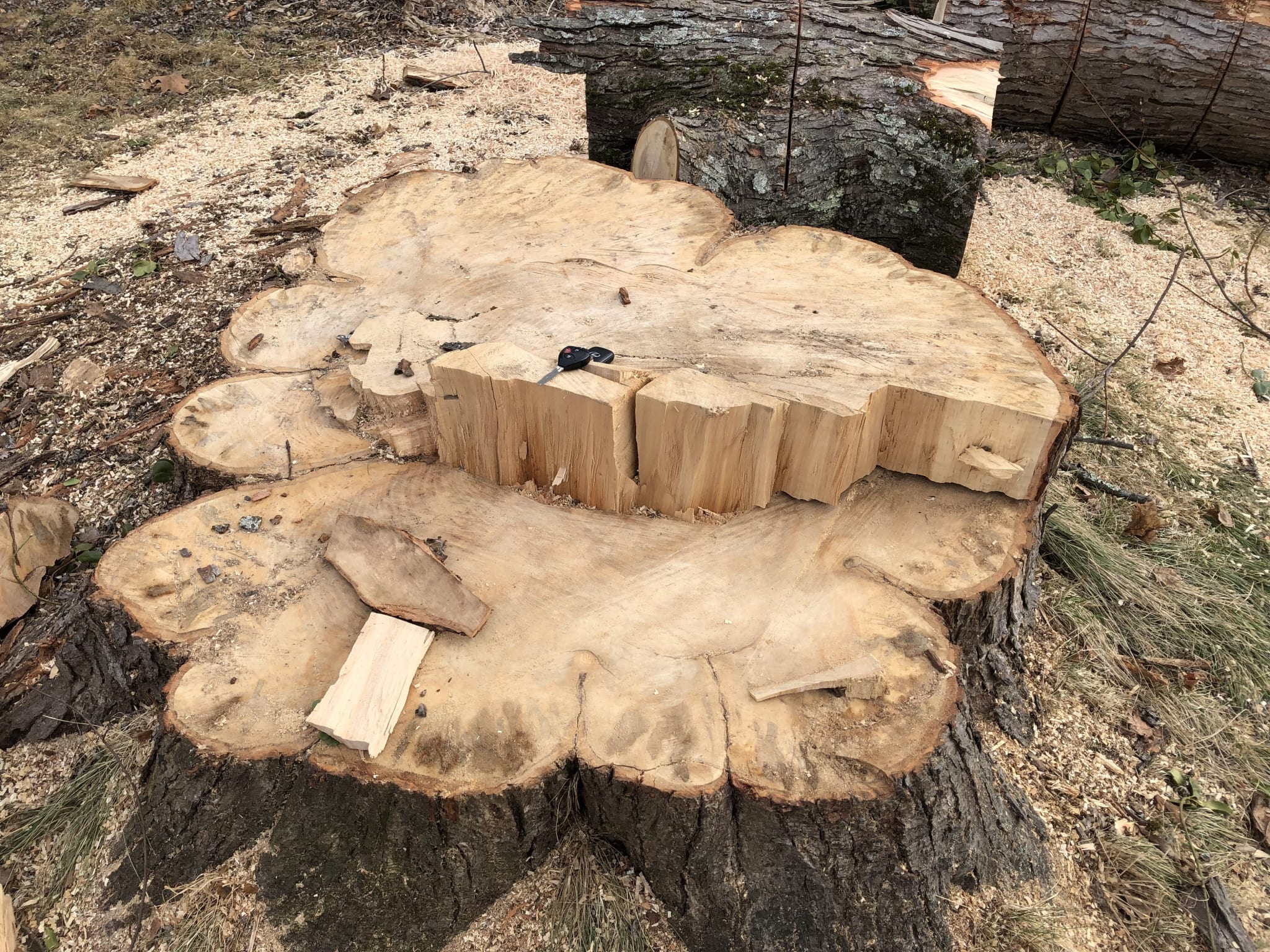
The plan
Everything I know about making mallets comes from Roy Underhill's show The Woodwright's Shop. I love that show. I made a trial mallet with a piece of cedar for the mallet head, and oak for the handle, but this time I decided to try a round piece for the handle. I started with a piece of tree branch that came down in my yard years ago that I de-barked and kept, and a weird chunk of wood. First step: clean up the stock.
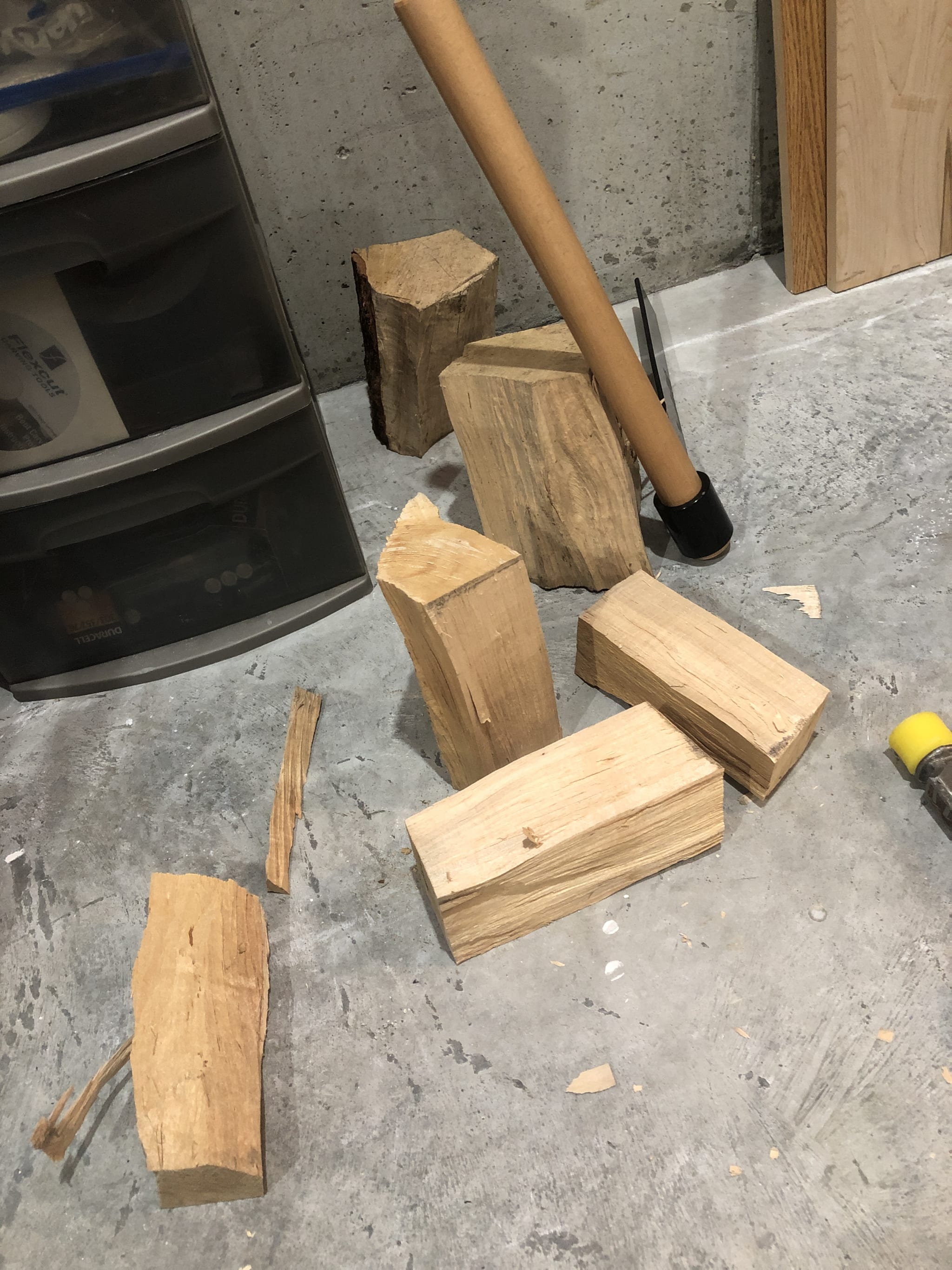
The build
It was a fairly straightforward process. First, I used my froe to get close to rectangular, then planed it as best I could to get a good block for the mallet head.
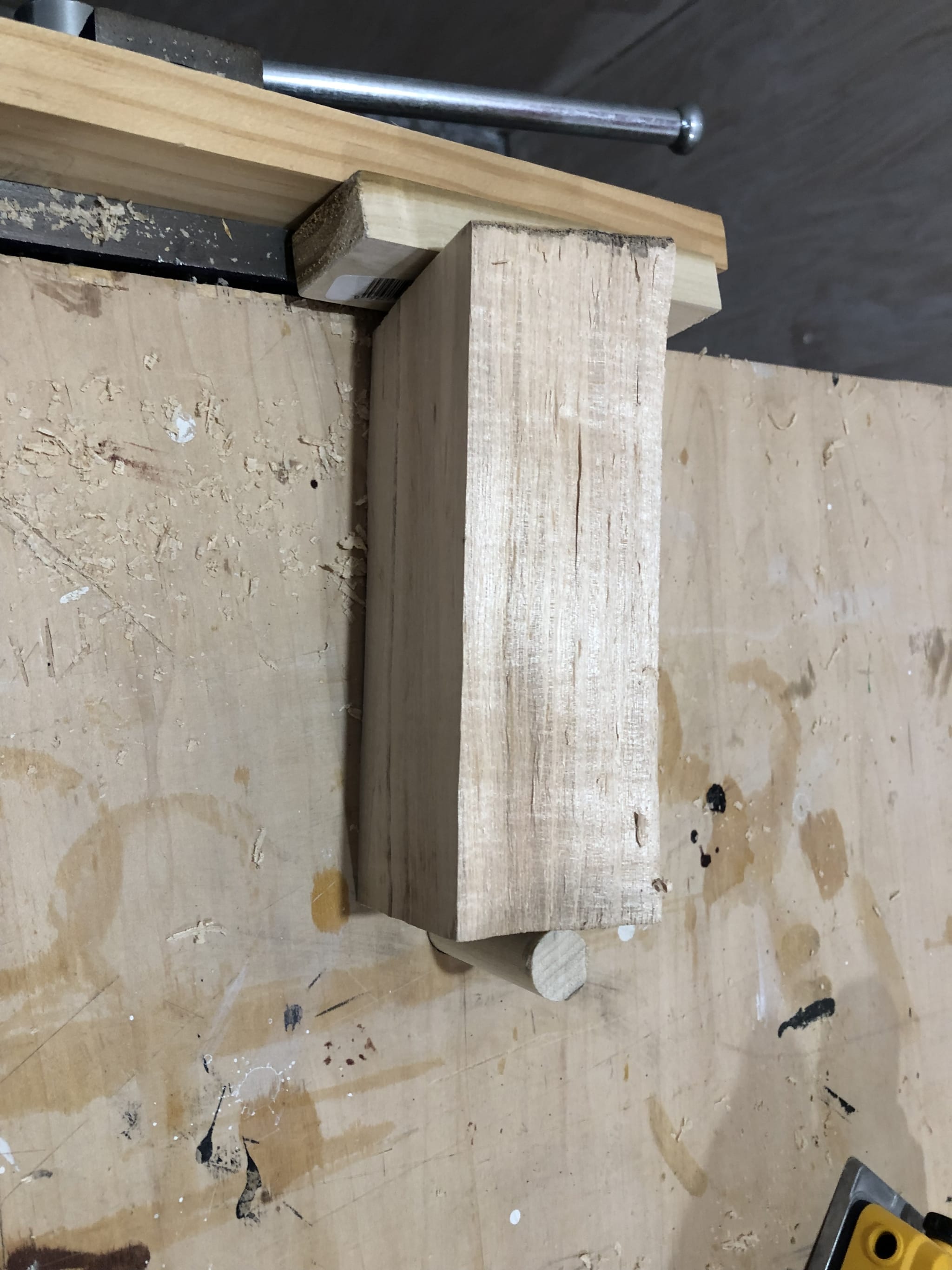
After the block was shaped, I drilled a straight hole through it with a forstner bit.
Next, trimming down the maple tree branch that I had around. In order to get it to fit nicely, it should be a bit wider on top, and skinnier down where the handle part is. Imagine like an inverted cone. That way as you use the mallet, it would only get tighter. For this part, I used my drawknife.

After that, it was a simple matter of fitting the handle into the head. This part took a little bit of check-and-trimming, but it came through with enough handle for me to be happy with.
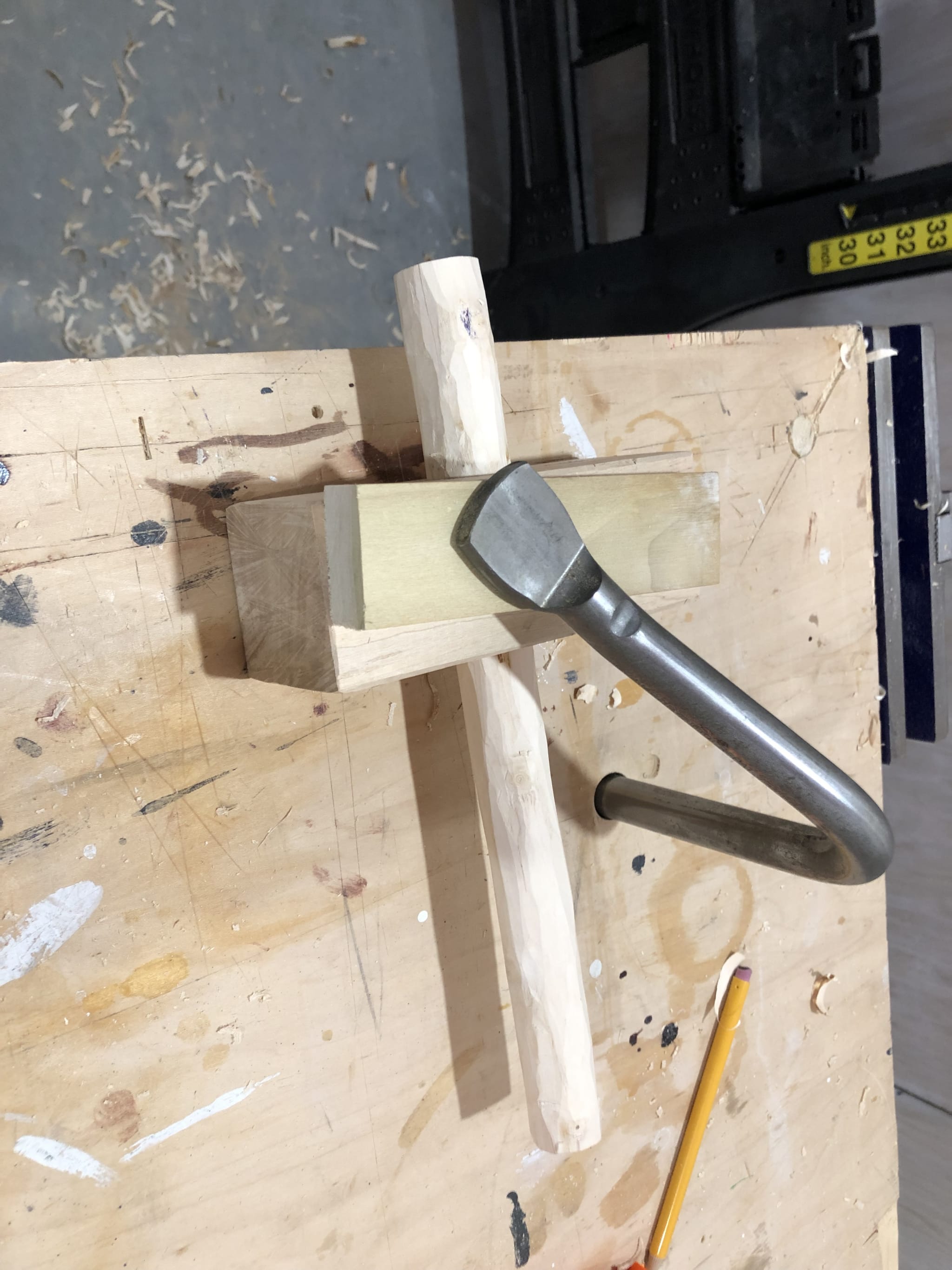
After trimming off the last excess, I decided to not sand anything and leave it with a tooled finish.
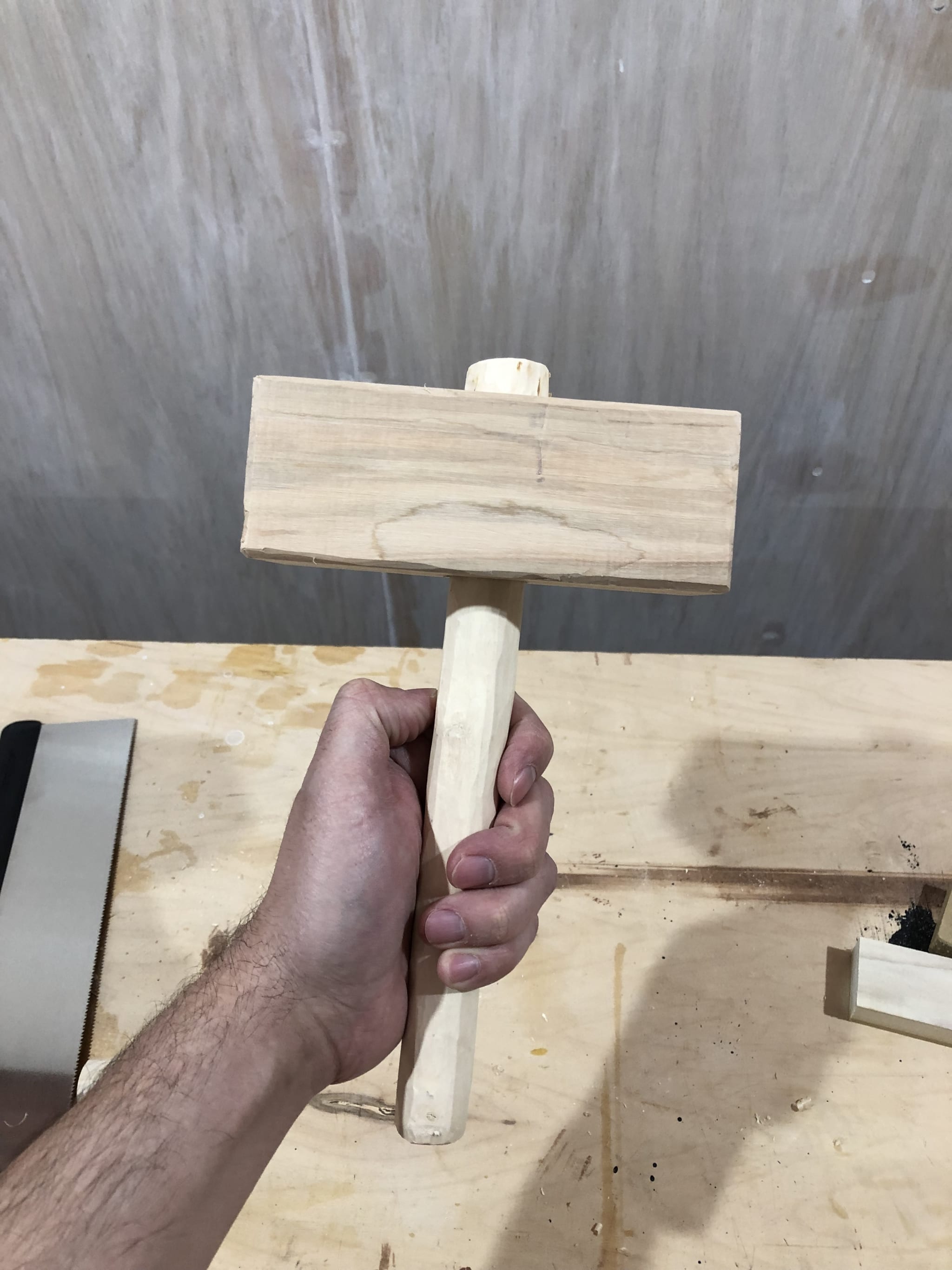
Finally, I applied just a coat of boiled linseed oil.
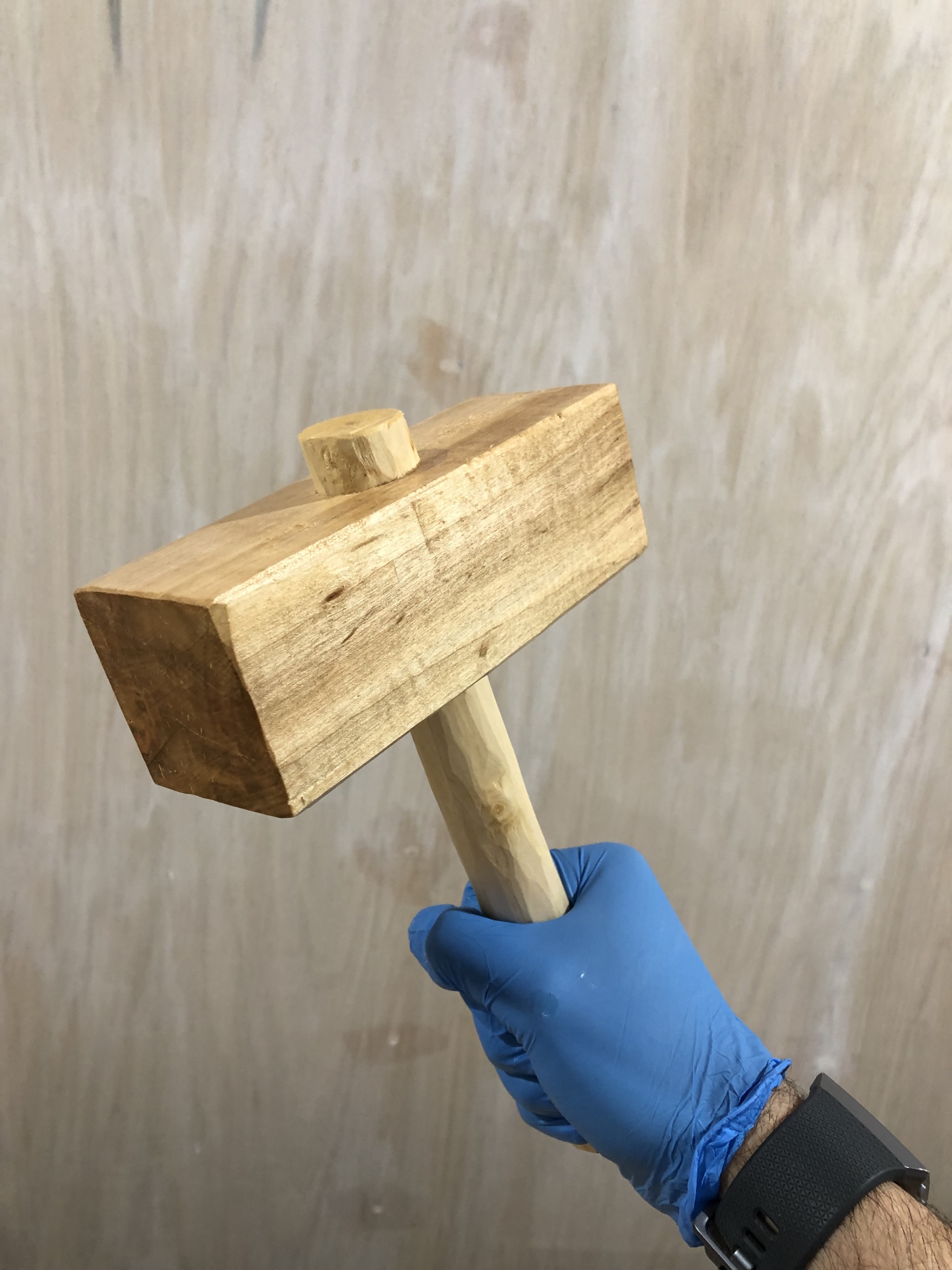
Until next time!